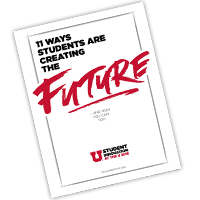Buildings consume huge amounts of energy, and as they become more wired and connected, it’s increasingly important to be able to predict how much energy they will use and when. Aowabin Rahman, a Ph.D. student in mechanical engineering, is helping solve this problem by using machine learning.
“We are creating a model that can adapt itself based on the patterns of electricity use it sees in past data and predict what happens in the future,” Rahman said.
He is working with Amanda Smith, a mechanical engineering professor, and Vivek Srikumar, a computer professor at the U. They have published several papers on the topic and tested their model on buildings in Salt Lake City. Their results show that their model is accurate at predicting energy use on an hourly basis more than a week into the future.
Machine learning algorithms are needed because of the complexities involved with predicting future energy use. There are many variables, ranging from doors opening to weather patterns, and some variables are impossible to track. Rahman’s algorithm is able to overcome these challenges and provide valuable insights. “My model creates surrogates that show these variables without having that data,” he said.
More articles like this in ‘Student Innovation @ the U!’
Find this article and a lot more in the 2018 “Student Innovation @ the U” report. The publication is presented by the Lassonde Entrepreneur Institute to celebrate student innovators, change-makers and entrepreneurs.





Very special like you & God bless your sons and your wonderful family.